Buran and Baikonur

Buran's launching tower and gantries at Baikonur, the centre of the Soviet space programme. Photos: English Russia/themysteryworld.com
In the same vein as my visit last year to Chernobyl and Pripyat, here is another abandoned part of the world that bears echoes of the past: these eerie photographs show the giant, hulking remnants of the Buran space orbiter project at Baikonur Cosmodrome in Kazakhstan, once the crown jewel of the Soviet space program and the world’s most advanced spacecraft; now only thousands of tons of scrap metal.

The giant apparatus for lifting the Buran shuttle and the rocket that would
carry it into an upright launch position

An abandoned part of the huge Baikonur launch site. Photos: Buran-Energia.com
Buran (Russian: Бура́н, ‘blizzard’) was the Soviet Union’s answer to the US Space Shuttle, which first flew in 1981. Proposed in 1975, it did not take its final shape until 1978, by which time NASA’s project was entering its final stages.
At a glance Buran appears physically similar to the Shuttle — Soviet scientists had come to the same conclusions regarding how to propel a re-usable orbital craft into space using booster rockets, and the laws of physics, then and now, apply equally to all nations. But the project team had taken a different approach – while NASA brought rocket boosters, a central fuel tank and the rocket engines on the Shuttle together as an integral system, the Soviets separated them into Energia, a multipurpose rocket launcher, and Buran, the orbiter.
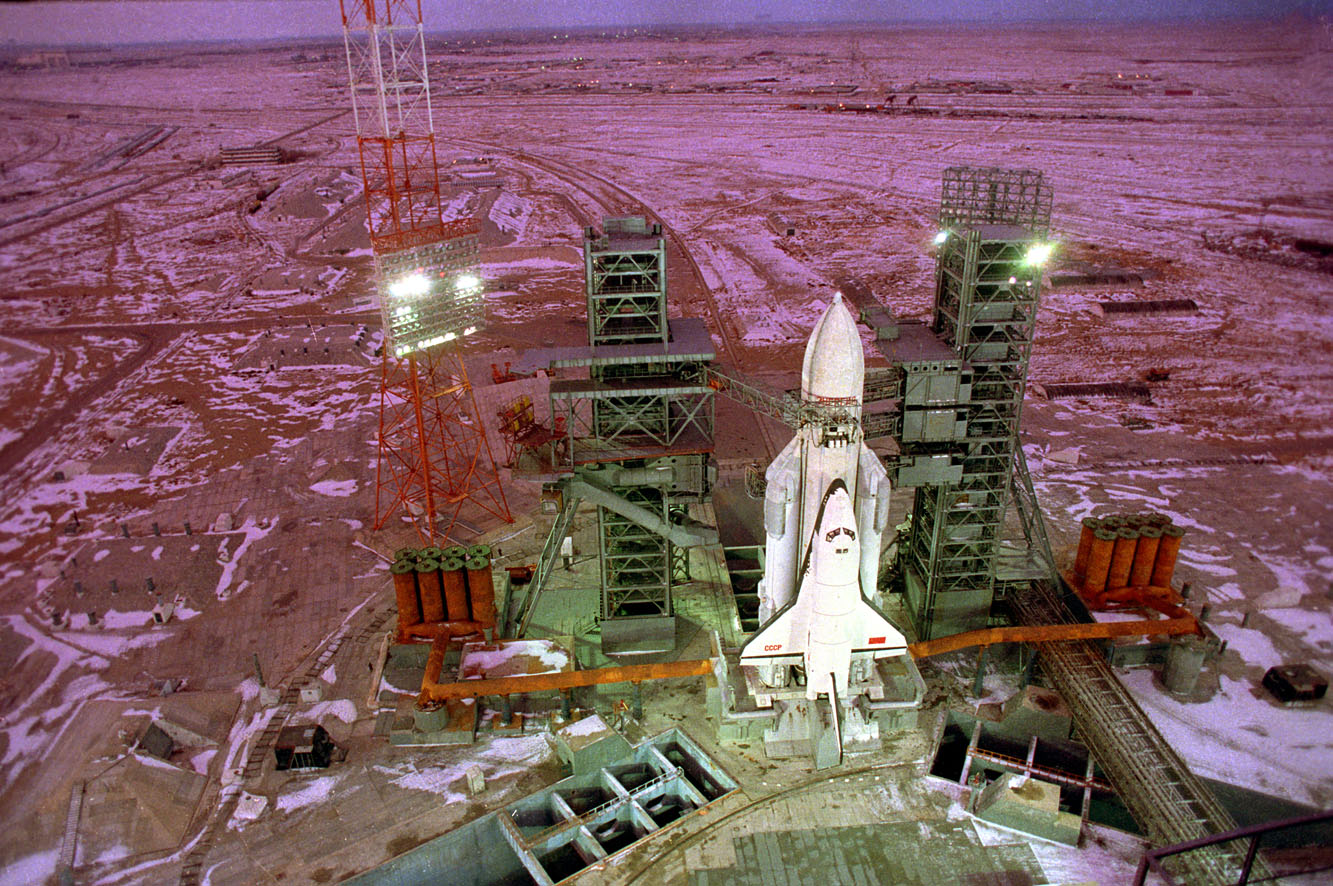
Buran and Energia on the launchpad, 1988
Energia was to be the USSR’s new booster rocket platform to replace the giant and unwieldy N1 rocket that, while comparable to NASA’s successful Saturn V, suffered major engineering setbacks — four rockets were destroyed during test launches — and was eventually scrapped in 1974 at a cost of 2.5 billion roubles. With the sacking of the scientists leading the N1 team, a new approach was adopted to design a powerful and largely re-usable rocket system that could carry into orbit loads such as satellites or modules for the Mir space station in addition to Buran. Unlike NASA’s design the central Energia rocket could carry its own payload, not just fuel.
Buran, unlike the Space Shuttle, had jet engines like those on an aircraft, not rocket engines, and so was capable of controlled atmospheric flight, while NASA’s design glided down to Earth using only its re-entry speed. With less space taken up by engines and propellant, Buran could also carry more cargo, withstand higher heat intensities during re-entry and, extraordinarily, could even fly un-manned on automatic pilot. A scientist from the Molniya Company, a contractor working on Buran, early on in the project remarked drily on the comparison between the two:
“It is necessary to remember that Buran was created more than five years after the Space Shuttle. It has allowed us to apply more modern methods of designing, materials, manufacturing technologies, test methods, and has enabled our designers to take into account all foreign miscalculations and mistakes.
“Certainly, while over the years the Space Shuttle has had numerous updates, it has a main advantage compared to Buran: it flies.”
The most ambitious Soviet space program of all, between 1975 and 1993 more than one million people, 1,286 companies and 86 government departments were involved on the project at a cost of 16 billion roubles.
The giant distances across which the USSR spanned posed a problem in itself – the Cosmodrome launch site is in Kazakhstan, the Yuzhnoye rocket foundry is in Ukraine, and a great deal of other manufacturing was located around Moscow. The answer they came to was the same as that proposed by NASA: to piggy back Buran and pieces of Energia on to a much larger, stronger aircraft.
The result were two huge aircraft – the first was VM-T, a highly modified transport version of the Myasishchev M-4/’Bison’ 1950s bomber rebuilt to carry loads of 50 tons.
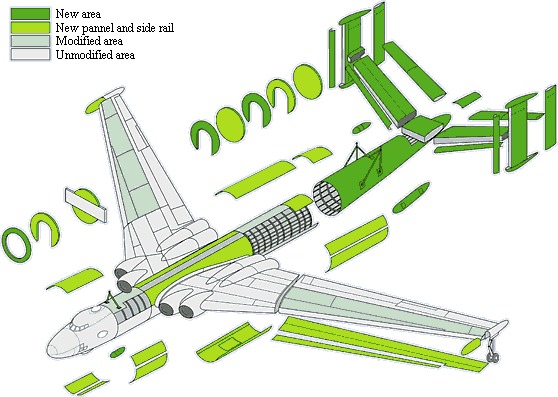
The 3M-T, renamed the VM-T 'Atlas' after designer Vladimir Myasishchev
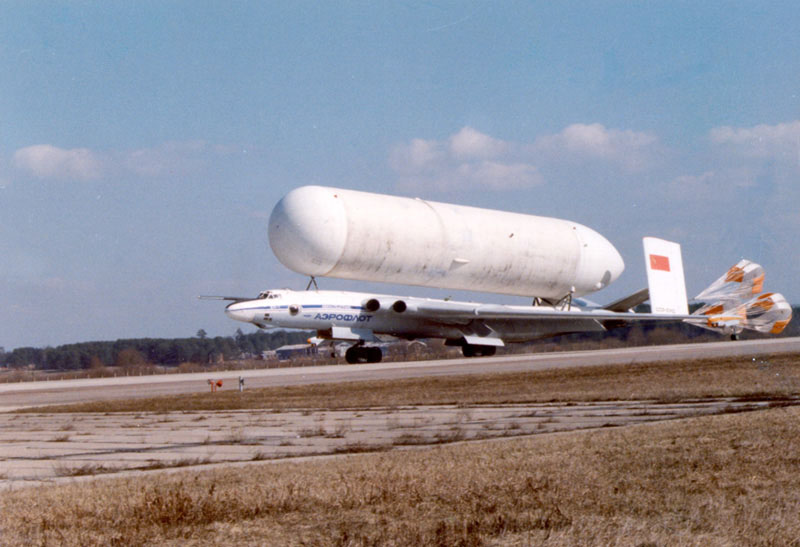
The VM-T 'Atlas' carrying parts for Energia
It was ready in time to ferry the Energia rocket stages and Buran itself to Baikonur, while its successor — the even bigger Antanov An-225 Mriya (Ukrainian: Мрія, ‘dream’) — was years later.
The An-225 is the largest aircraft ever built, with a load capacity of 250 tons. While only one was ever made, it is still in service with Ukrainian Anatov Airlines for the kind of cargo lifts that absolutely have to have the biggest plane in the world.
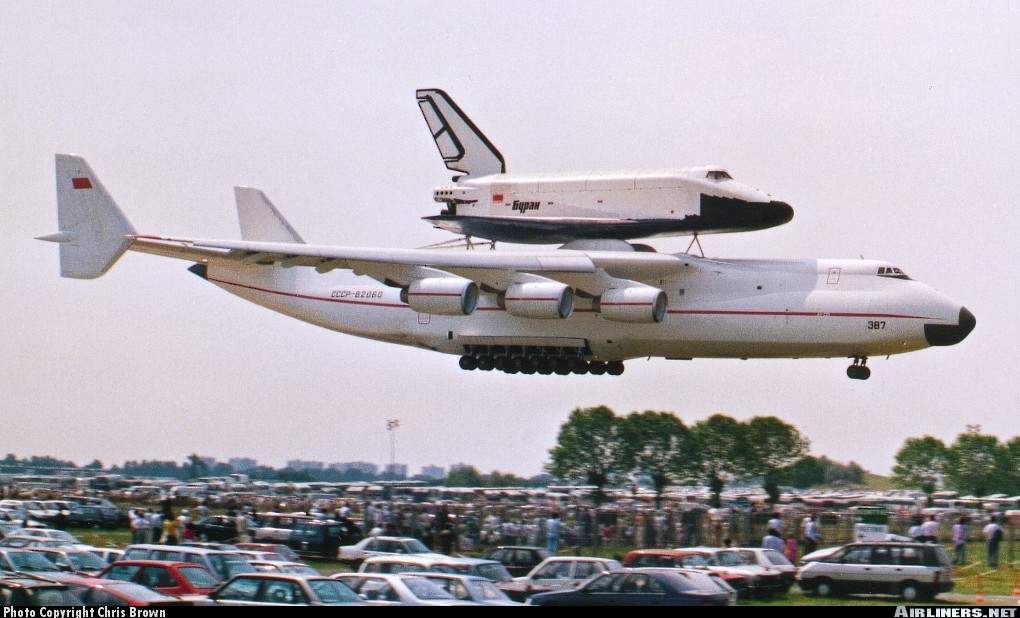
An-225, the largest aircraft ever built
In October 1988 Buran-Energia finally took off for the stars. With the manual control and life support systems not yet finished, the decision was made to carry out the first flight entirely on automatic — a unique and extraordinary feat, which earned Buran a place in the Guinness Book of Records as the first, and until NASA’s Boeing X-37’s maiden flight last year, the only spacecraft to do so. Lift-off and separation from Energia went without a hitch, and Buran orbited the Earth twice for 205 minutes before a practically pixel-perfect landing at Baikonur only a few feet from its designated landing point, without any human intervention. The onboard computer even detected the 40mph crosswinds at the landing strip and made the last minute decision to land from the opposite direction — correctly, but in the process no doubt taking years off the engineers nervously watching.
And what has become of all this technology, billions of roubles and the efforts of the finest technical and scientific minds the Soviet Union produced?
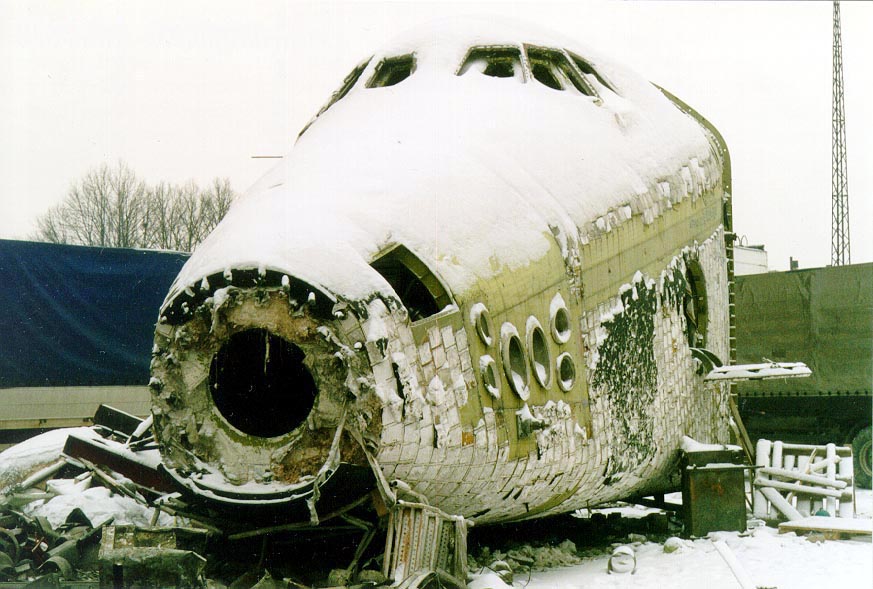
A Buran prototype cut up for scrap
After the breakup of the USSR, the project’s funding evaporated. Baikonur, in Kazakhstan, suffered from the same economic hardships that faced the rest of the disintegrating Union. In 2002, OK-1, the only Buran orbiter to have made a space flight, and its Energia rocket were destroyed when the ill-maintained hanger at Baikonur collapsed, killing seven workmen.

The collapsed hanger that destroyed the only functioning Buran
Several mock-ups and test models remain at Baikonur Cosmodrome museum, including one which visitors can clamber inside and sit at the controls. Others that were under construction when the Soviet Union collapsed have been dismantled or unceremoniously dumped, like OK-2, which now sits without wings or tailfin in a carpark in suburban Moscow.

Buran mock-up at Baikonur Museum
The flight test model OK-GLI, equipped with functioning engines, appeared at several airshows around the world before being sold and brought by boat from Bahrain in 2008 to the Speyer Technik Museum in Germany.
The Energia program ended, but the booster rockets lived on as the Zenit launcher, which performs space launches for commercial customers to this day. The rocket engines, the efficient RD-170 and its derivatives, have become a great Ukrainian export and power Lockheed-Martin’s Atlas V in the US, South Korea’s Naro-1 and the future Russian Angara rocket program.
The An-225 is still used as a cargo carrier, seen delivering huge 150-ton electricity generators to the tsunami-struck Samoan Islands in 2008.
One of the two remaining VM-T Atlas carriers, complete with Energia cargo module strapped to its back, is being converted into a tourist attraction to transport passengers 60 miles into the atmosphere to experience zero gravity for a few minutes. The first flights are slated for 2012.
Buran’s technology has not gone to waste, even if the hardware has: the techniques used in the heat tiles for Buran are now used to insulate Russian housing. You can even find original tiles on eBay now and again, ‘liberated’ by enterprising and cash-strapped looters.
This month marks 25 years since Challenger, the second NASA Space Shuttle, exploded shortly after take off, killing all seven astronauts onboard. The disaster, and that of the loss of the first shuttle, Columbia, in 2003 threw NASA into a tailspin, with questions asked at the highest levels what the organisation’s huge budgets were for. Questions and criticisms NASA to this day struggles to shake off, and the results of the organisation’s work apparently taking on progressively more military dimensions as a result as budgets are pulled.
It is 50 years ago this year that Yuri Gagarin orbited the Earth for the first time, and more than 40 years since Neil Armstrong and Buzz Aldrin walked on the Moon. Yet the high ideals of spaceflight and exploration have foundered. Political will, vision and hard cash generated by the Cold War has given way to navel gazing and the commercialisation of the space programmes, on both sides of the Atlantic.
The NASA Space Shuttle program ends this year, with Discovery, Endeavour and Atlantis making their final flights into the heavens in February, April and June respectively. The replacement, Project Constellation, was cancelled by Obama last year, despite his pronouncements on the importance of space. Despite the nascent beginnings of a private spaceflight and space tourism industry, the lack of viable launch vehicles could endanger the International Space Station – the most expensive object ever built at somewhere over $100 billion dollars, and our only manned ‘off-world’ presence.

There have been enormous technological leaps since the 1960s — look at how powerful, cheap and ubiquitous home computers have become, yet the Space Shuttles contain Intel 8086 16-bit processors, decades older than those found in a bog-standard PC, and in fact similar to that used in the original IBM PC.
Apparently neither the will nor the way to project humankind beyond our wet ball of rock three from the sun has kept pace. Despite the resources, the scientific discoveries, and the potential for not life-changing, but species-changing events and knowledge to be found beyond the skies, in a world of ever-increasing costs mired in national, ethnic and political squabbles, the dreams of science fiction seem destined to remain just that.




